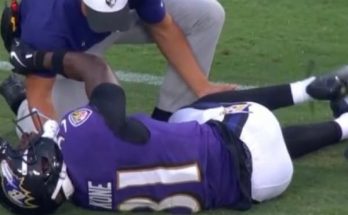The landscape of college athletics has undergone a seismic shift in recent years with the introduction of Name, Image, and Likeness (NIL) rights, allowing athletes to monetize their personal brands while still in school. This change has unlocked unprecedented opportunities for student-athletes across the nation, opening doors that were once firmly closed. However, with great opportunity comes significant challenges, and the Texas Tech General Manager has stepped forward with a bold warning about the risks of underpaying athletes in this new era. The cautionary message reflects deeper concerns about fairness, the sustainability of college sports programs, and the future of athlete compensation.
At the heart of the NIL era is the fundamental redefinition of what it means to be a college athlete. No longer are players merely amateurs participating for scholarships and the chance to play at a higher level; they are now entrepreneurs with marketable skills and influence. This shift has changed the dynamic between athletes and their programs, forcing institutions, coaches, and administrators to rethink their roles and responsibilities. The Texas Tech GM’s warning underscores the urgency of addressing compensation gaps to avoid long-term consequences that could destabilize collegiate athletics.
The first issue raised by the Texas Tech GM is the ethical responsibility schools have in recognizing the value athletes bring to their programs. Underpaying athletes—or failing to support them adequately in the NIL marketplace—risks creating exploitation scenarios where the institution benefits immensely from the athletes’ talents and marketability while providing insufficient financial opportunities for the players themselves. This imbalance is particularly acute in revenue-generating sports such as football and basketball, where the spotlight shines brightest, and NIL deals can be most lucrative.
Despite NIL rights, disparities remain. Top-tier athletes with significant social media followings or exceptional performance can secure high-value endorsements and deals, but many others struggle to find fair compensation. The Texas Tech GM warns that this uneven distribution risks deepening divides among athletes and programs, creating tension and dissatisfaction that could erode team cohesion and morale. Furthermore, it could lead to talented athletes seeking transfers or alternative career paths if they feel undervalued or undercompensated in their current environment.
Another dimension of the GM’s warning relates to the competitive integrity of college sports. As NIL deals become more central to athletes’ financial futures, schools that fail to support their players properly may find themselves at a recruiting disadvantage. Prospective athletes are increasingly savvy about their NIL potential and are likely to choose programs that provide the best opportunities to maximize their earnings. Programs that lag behind in helping athletes navigate and secure NIL deals may lose top talent, weakening their competitive standing. The Texas Tech GM points out that this dynamic could create a vicious cycle where underfunded programs fall further behind, making it harder to attract elite athletes and stay relevant.
Moreover, the GM highlights that the NIL era demands transparency and fairness in how institutions manage athlete compensation and opportunities. With numerous third-party entities now involved—agents, marketers, brands, and legal advisors—there is an increased risk of exploitation, conflicts of interest, and unethical practices. Schools that do not proactively advocate for and protect their athletes in these dealings could face reputational damage and legal challenges. The Texas Tech GM stresses that institutions must develop robust frameworks to ensure that athletes are treated fairly, fully informed, and empowered to make the best decisions about their NIL engagements.
The warning also extends to the broader implications for athlete well-being and career sustainability. While NIL deals can provide significant short-term financial rewards, they also introduce complexities and pressures that student-athletes must manage alongside their academic and athletic responsibilities. The Texas Tech GM emphasizes the need for programs to offer comprehensive support systems, including education on financial literacy, contract negotiation, and brand management. Without these resources, athletes may be vulnerable to poor decision-making that could jeopardize their long-term success and financial security.
Furthermore, the GM raises concerns about the potential for NIL disparities to exacerbate existing inequalities in college sports, including gender and racial inequities. Female athletes and those from underrepresented backgrounds may face additional barriers to securing NIL deals, perpetuating historic patterns of inequity. The Texas Tech GM calls for intentional efforts to create inclusive and equitable opportunities across all sports and demographics to ensure that NIL benefits are accessible to all athletes, not just the most visible or marketable.
From an institutional perspective, the Texas Tech GM highlights the financial and operational challenges that come with adapting to the NIL era. Schools must balance investing in athlete support with managing budgets and compliance requirements. Programs that fail to allocate sufficient resources toward NIL initiatives risk alienating their athletes and falling behind in the increasingly competitive recruiting landscape. The GM’s warning serves as a call to action for college sports administrators to prioritize NIL strategy as a critical component of program success.
In conclusion, the Texas Tech General Manager’s bold warning about the dangers of underpaying athletes in the NIL era resonates as a crucial reminder that the transformation of college sports is far from complete. The opportunities that NIL presents are immense, but they must be matched with responsibility, fairness, and strategic foresight. Institutions that recognize the value of their athletes and invest accordingly will be best positioned to thrive in this evolving landscape. Meanwhile, those that ignore these challenges risk long-term damage to their programs, athlete welfare, and the integrity of college athletics itself. The NIL era is here to stay, and the way schools respond will define the future of collegiate sports for generations to come.



